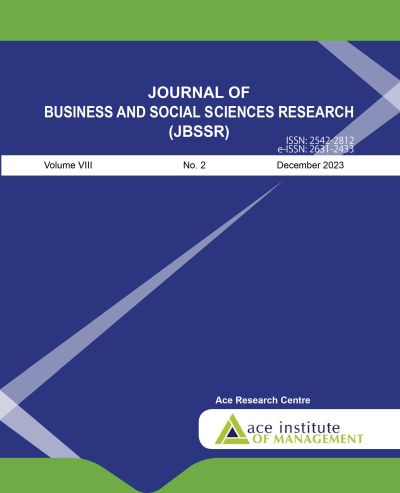Stock Market Development and Economic Growth of Nepal
DOI:
https://doi.org/10.3126/jbssr.v8i2.62132Keywords:
economic growth, regulatory authority, stock market developmentAbstract
The development of Nepal’s stock market and economic growth are examined in this study since several factors, including stock market development, affect economic growth. The stock market development indicators are market capitalisation, trading turnover, NEPSE index, gross capital formation, and gross national savings. This research is based on secondary data (1995 to 2022) extracted from the Quarterly Economic Bulletin of Nepal Rastra Bank in mid-July 2023. The econometric methods such as the Johnson cointegration test, Granger causality test, and VAR model were used to assess the nexus between the stock market development and economic growth in Nepal. Long-term cointegration has been observed between the stock market development indicators such as gross national savings, market capitalisation, gross capital formation, trading turnover, stock market index, and economic growth. Likewise, economic growth and stock market development are shown to be causally related in a unidirectional manner by the Granger causality test. It concludes that stock market development matters for economic growth in the short and long run. The regulatory authority may adopt an appropriate policy for sustained growth of the stock market through (i) improving disclosure and transparency, (ii) enhancing investor awareness and education, (iii) safeguarding the interest of shareholders, (iv) diversifying the trading opportunities, and (v) maintaining the macroeconomic stability.
Downloads
Downloads
Published
How to Cite
Issue
Section
License
© JBSSR/AIM
Authors are required to transfer their Copyright to the Journal of Business and Social Sciences Research.




